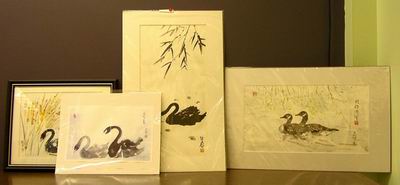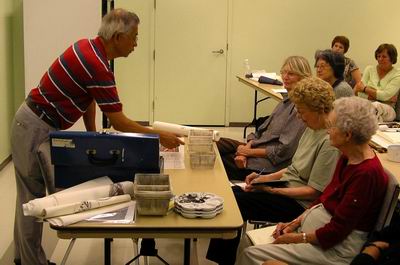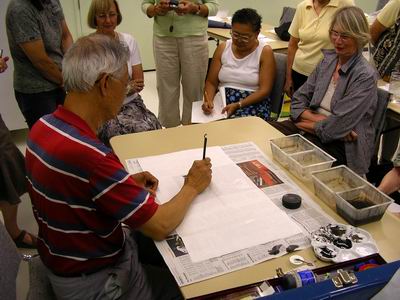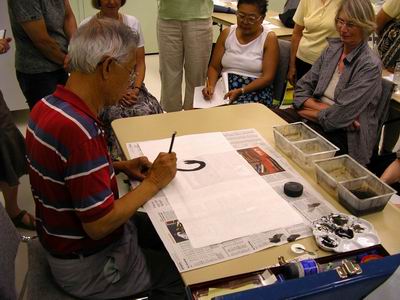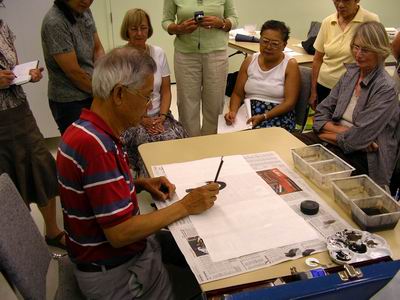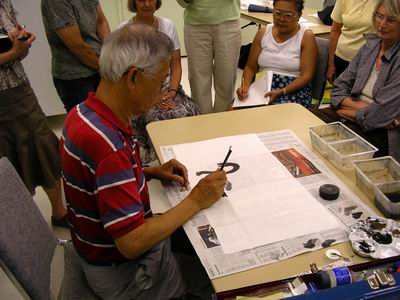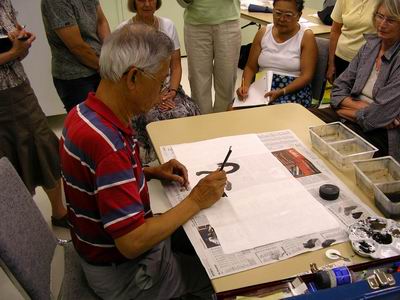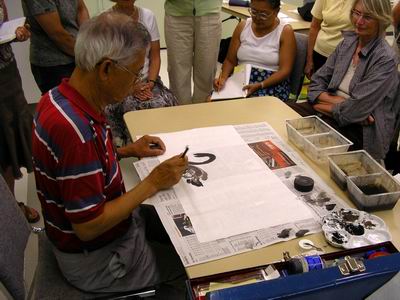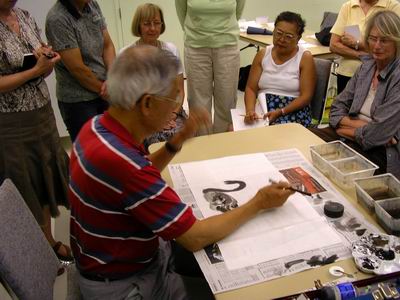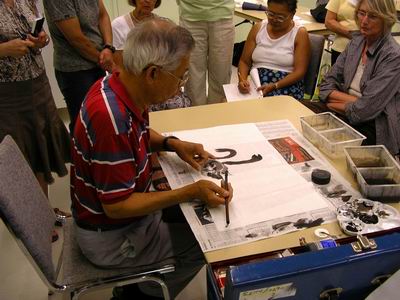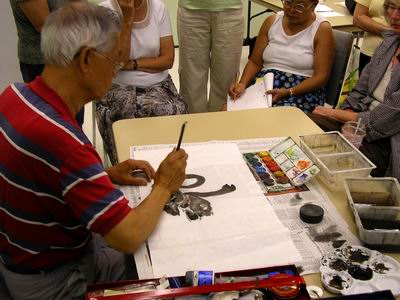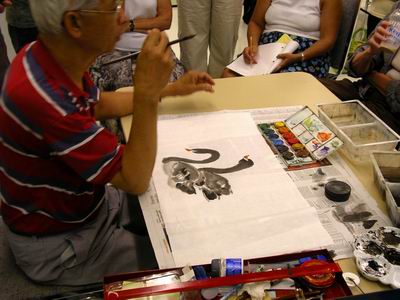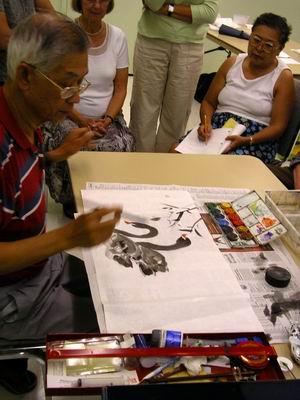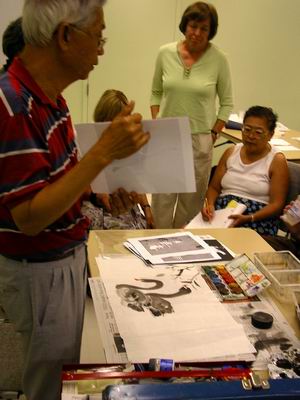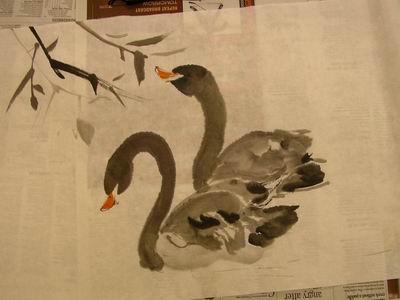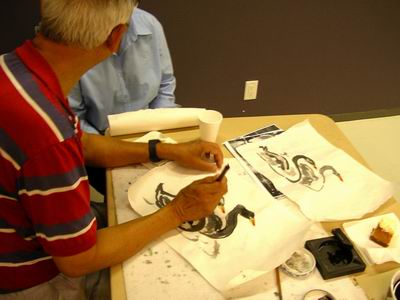Trumpeter Swans with Charles Leung - September 8th, 2007
In Charles Leung's travels this year, trumpeter swans seemed to be on his trail. Or perhaps they are so majestic that no matter where you find the swans, they invite a painting. In his workshop on these birds, Charles brought his paintings of these graceful birds for participants to study.
For well-known artist and instructor, Charles Leung, a discussion on the subject of the workshop precedes any painting. In his introductory comments, Charles reminded the sumi-e artists at the workshop that the overall flow and dynamics of the painting was the important goal they were after.
When it comes to starting a painting of swans, Charles recommended two strokes to compose the head.
After the head, the neck follows in one continuous S-shaped stroke.
The body is a mix of stokes and a variety of tones to create the effect of different types of feathers.
Charles reminded the workshop participants that the wings are very large. This large wingspan is evident when looking at flying swans. When the wings are folded and the swan is on the water, the painting must convey the size and bulk of these wings.
Charles Leung suggested that feet could be added though with care as they are below the water line.
Tail feathers, slightly darker in color and stiffer in texture, complete the body.
At this point, Charles filled in some of the body with various grey tones and a variety of brush strokes to give the effect of ruffled feathers.
After this start, Charles stopped to ponder how to develop an effective composition from this point.
A second swan was added to balance the painting in a complementary way.
Charles captured the dynamics of the scene by changing the line of the neck in the second swan. The effect created a pair of swans, each with its own personality.
Though Charles developed the painting of the swans with sumi-e ink, he used orange for the beaks of the swans. Creating an effective painting with the right balance of elements, dynamics and colours was discussed by Charles Leung as he worked.
To offset the swans in the painting, Charles added leaves and branches to create a more complete composition.
Charles brought many pictures and paintings of swans with him including flying swans, which he shared with us. There were lots of images to inspire us as it became our turn to paint.
The final work had a liveliness of expression that is typical of Charles Leung's work.
Workshop participants were fortunate to also get some one-on-one coaching. Charles showed how making a few slight changes could result in a more effective trumpeter swan painting.
Painting these classic trumpeter swans fascinated the class. We headed back to our own studios with a wonderful appreciation of these majestic birds and some practical knowledge of how to capture them in a painting.
